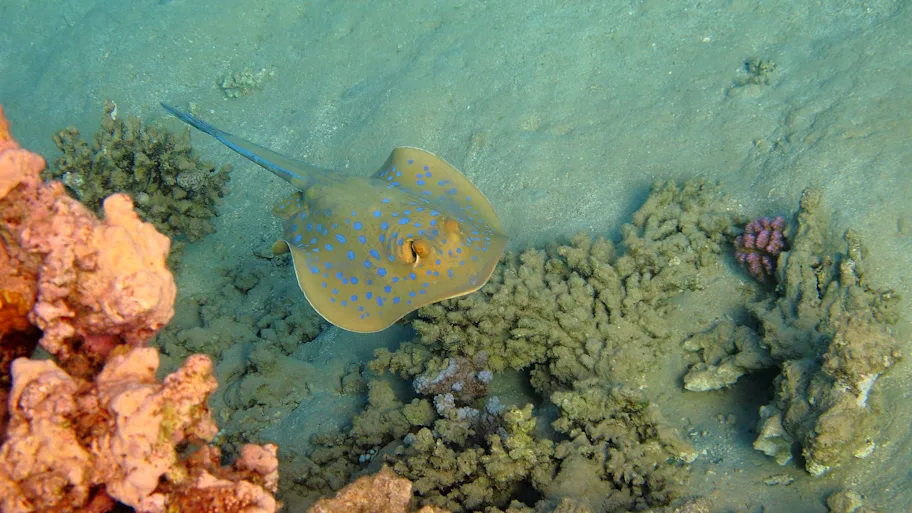
- Science news
- Featured news
- Social fish with low status are so stressed out it impacts their brains
Social fish with low status are so stressed out it impacts their brains

In social fish like cichlids, status is everything. High-status males are territorial and colorful – they defend territories and reproduce with females. Low-status males, which are less colorful and can’t maintain territories, are also not reproductively active. Scientists trying to understand how this social stress might affect the fish dissected cichlid brains and found that low-status fish had generally higher levels of oxidative stress, which is linked to poorer mental and neurological health in humans. Meanwhile, high-status fish had generally higher levels of antioxidants, which protect against oxidative stress damage.
Social stress is bad for your brain. It’s a prime suspect in the accumulation of oxidative stress in the brain, which is believed to contribute to mental health and neurodegenerative disorders — but the mechanisms that turn social stress into oxidative stress, and how social status affects this, are poorly understood. By studying a highly social, very hierarchical fish species, cichlids, scientists have now found that social stress raises oxidative stress in the brains of low-status fish.
“We found that low rank was generally linked to higher levels of oxidative stress in the brain,” said Dr Peter Dijkstra of Central Michigan University, lead author of the article in Frontiers in Behavioral Neuroscience. “The patterns of oxidative stress in the brain are likely influenced by social experience modulating cellular processes in the brain.”
A fish-eat-fish world
Male cichlids have a strict, highly visible social hierarchy. Dominant males, which have higher levels of androgen hormones, are larger, more aggressive, and more colorful than subordinate males. They defend territories and court females. Hormones like androgens which are triggered by social stress have been linked to oxidative stress changes in several organs — so cichlids, with stressful social lives tightly linked to androgen levels, are ideal for studying the impact of social stress on oxidative stress levels.
The scientists set up 15 large tanks divided in two, and placed six females and two males in each experimental compartment, allowing each group of fish to interact freely and to visually interact with the neighboring group. They also added half a flowerpot to each compartment, to give the dominant male a territory to defend. To quantify the cichlids’ behavior, the scientists filmed them and recorded the behaviors witnessed. In all but two groups, the cichlids rapidly developed a hierarchy, which remained stable over the weeks of the experiment.
Eventually, the researchers took blood samples from the male fish and dissected their brains, as well as measuring their size and length and the size of their gonads relative to their body. (Larger gonads indicate higher levels of androgens.) In each division of each brain, they measured markers of oxidative stress and antioxidant capacity, which counteracts oxidative stress. They also quantified the oxidant capacity and oxidative DNA damage present in each brain section.
Read and download original article
Stressful society
The scientists found that the low-status fish had higher levels of oxidative stress and lower antioxidant capacity than the high-status fish. Although the higher-status fish had higher indicators for oxidative stress in their blood, their brains seemed to be protected. Indicators of reproductive activity, associated with high status in these fish, were linked to higher levels of antioxidants and lower levels of oxidative stress in the brain. This could be linked to their levels of androgens, which can be neuroprotective in some cases. Low-status fish had smaller gonads and therefore lower androgen levels.
However, the effects of status on oxidative stress are complex. When the scientists looked at markers of oxidative DNA damage and antioxidant capacity in different brain divisions, they found that different markers were differently impacted by social status.
“It's important to note that the patterns detected relative to oxidative stress in the brain may not be 'bad' for the animal,” said Dijkstra. “Maybe in the future we will study the fitness consequences of oxidative stress in the brain. But showing that patterns of oxidative stress are linked to social stress is important, and may provide important insights into mechanisms by which social stressors promote oxidative stress and disease in the brain.”
“Social competition in our cichlids is a great model system to understand how competition in our modern human societies influences important physiological functions,” added Dijkstra. “We compare ourselves to others continuously, and these problems are especially compounded by social media. But I would be hesitant to directly relate our findings to human societies.”
The researchers also cautioned that more targeted studies will be needed to understand the impact of the interplay between social stress and oxidative stress on specific brain regions.
“I think we just uncovered some interesting patterns across different divisions of the brain,” said Dijkstra. “The next step is to understand the regulation of oxidative stress better and how social stress influences this. This requires more rigorous experimental studies.”
REPUBLISHING GUIDELINES: Open access and sharing research is part of Frontiers’ mission. Unless otherwise noted, you can republish articles posted in the Frontiers news site — as long as you include a link back to the original research. Selling the articles is not allowed.






